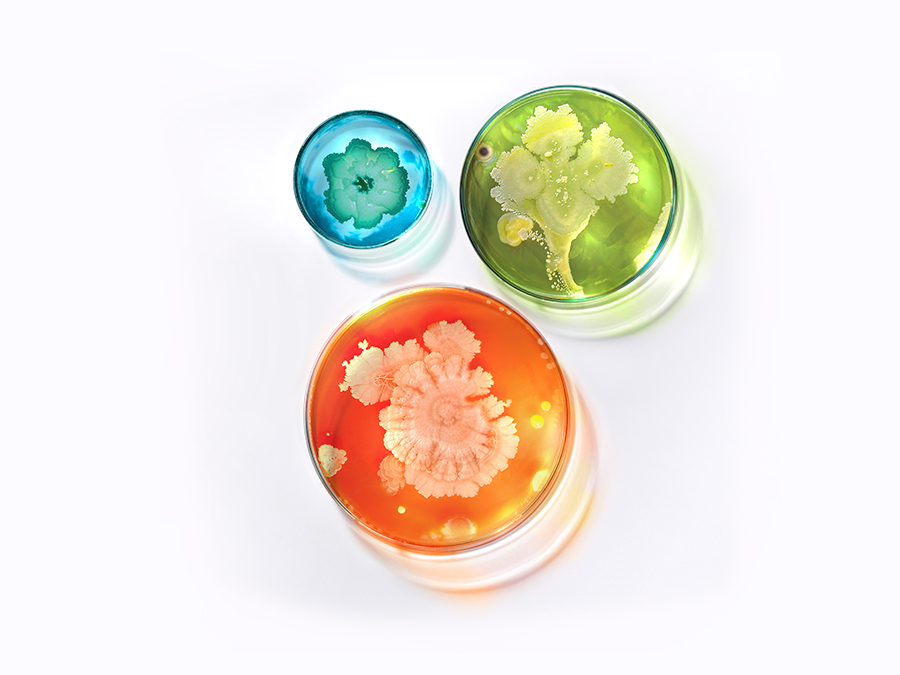There are trillions of bacteria from hundreds of species living on and in your skin. Your skincare goals should always include their well-being, as they are what ultimately determine skin health and graceful ageing.
As a rule, body site is the most important factor in determining which bacteria are dominant and desirable on skin. Here is a cursory look at the three (four if we include lactobacillus) most abundant genera in the skin microbiome:
- Corynebacteria are rod-shaped bacteria. The species that grow on skin cannot produce their own lipids (fats) and are dependent on lipids from sebum. They are salt-tolerant and can easily live in high-sweat regions of the skin. Some are even reliant on vitamins from sweat to survive.
- Propionibacteria,now referred to as Cutibacteria, are known for their ability to make propionic acid (a short chain fatty acid). They are mostly found in hair follicles but can also be found on the skin surface. They are specialised at acquiring nutrients from sebum and make many different enzymes that break down oil.
- Staphylococci are highly adaptable and are found in both moist and dry areas of skin. Some species can survive in low oxygen habitats such as hair follicles. They are salt-tolerant and may even use the urea in sweat as an energy source. The most common skin commensal is Staphylococcus epidermidis. It can inhibit biofilm formation and destroy existing biofilms of Staphylococcus aureus, which is a close relative, but is considered a pathogen.
- Lactobacilli produce lactic acid, which is important to keep skin at a low pH. They are found nearly everywhere in nature, and are one of the first bacterial groups to seed our skin as we pass through the birth canal and into the world. Many of the live species and lysates used in Esse are from the lactobacillus family. They are keystone species in skin – they aren’t present in great numbers, but they create an ideal environment to allow for the colonisation of other beneficial microbes.
Bacteria make up the majority of the microbial biomass on skin but there are a few other microbes that have a large impact on skin health.
- Your skin contains an enormous number of viruses – about 10 for each bacterium… and that’s a good thing. The overwhelming majority of these are phages that keep bacterial populations in check. Viruses are at least 10 times smaller than bacteria.
- About 4,5% of your skin microbiome is made up by archaea. These are similar to bacteria in size but very little is known about their function in the skin microbiome. There are no known incidents of archaea becoming pathogenic in humans.
- Yeasts are another group of microbes present on skin. There are at least 14 species of the genus Malassezia. These single-celled fungi favour high-oil sites. They normally occur as individual spherical cells, but start to form chains if they become pathogenic. These fungi help protect from other microbes, regulate the immune response and digest fatty acids from sebum. Some species have been linked to dandruff, seborrheic dermatitis and hypo/hyperpigmentation. Malassezia is the dominant fungal genus over the whole body, except the feet.
When we consider the number of microbes and their interactions with and each other, it’s easy to see how complex these relationships can be. It can be difficult to classify species as “good” or “bad” – sometimes, good can become bad when they occur in areas they should not. What’s important to remember is that these ecologies are able to balance themselves, often with very little help and only a few educated actions.
- Remember pH is key. Beneficial microbes prefer a specific pH, so don’t disrupt this with harsh cleansers and products that aren’t pH balanced at around 5.
- Avoid stripping the skin of oils – a good many microbial partners make good use of your skin’s sebum. Stripping it robs them of food and puts pressure on your skin to make more (consistently stripping skin of oil results in poor quality sebum, which attracts a whole different set of microbes).
- Don’t be tempted to sanitise unnecessarily – anti-bacterials kill all microbes and leave your skin as a blank slate, making it easier for opportunistic microbes to take the place of beneficial ones.
On the whole, if you intervene as little as possible, your skin will have time to find balance. When you do want to give your skin a little extra care, go with skincare that prioritises the microbiome over the usual promises of anti-ageing magic.





